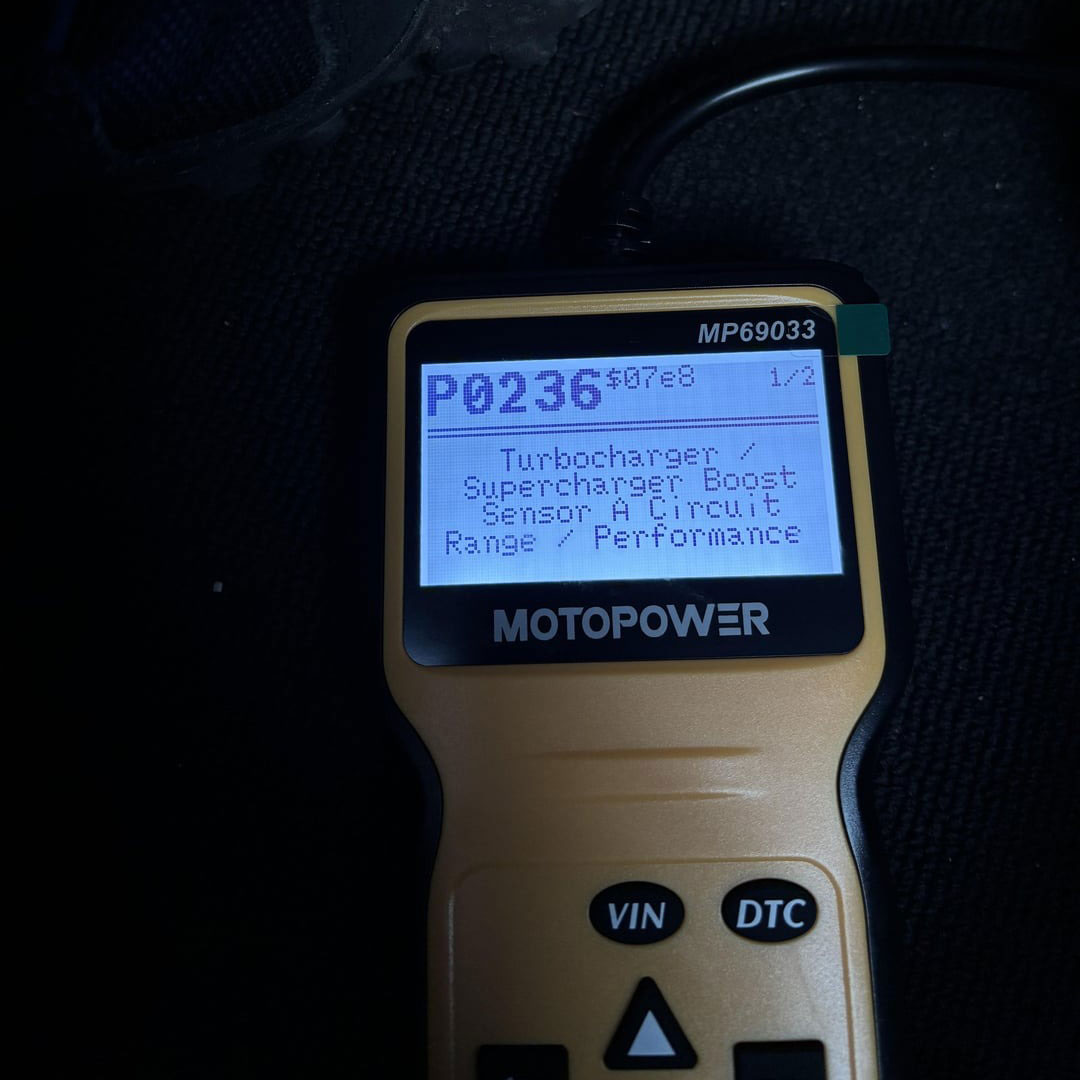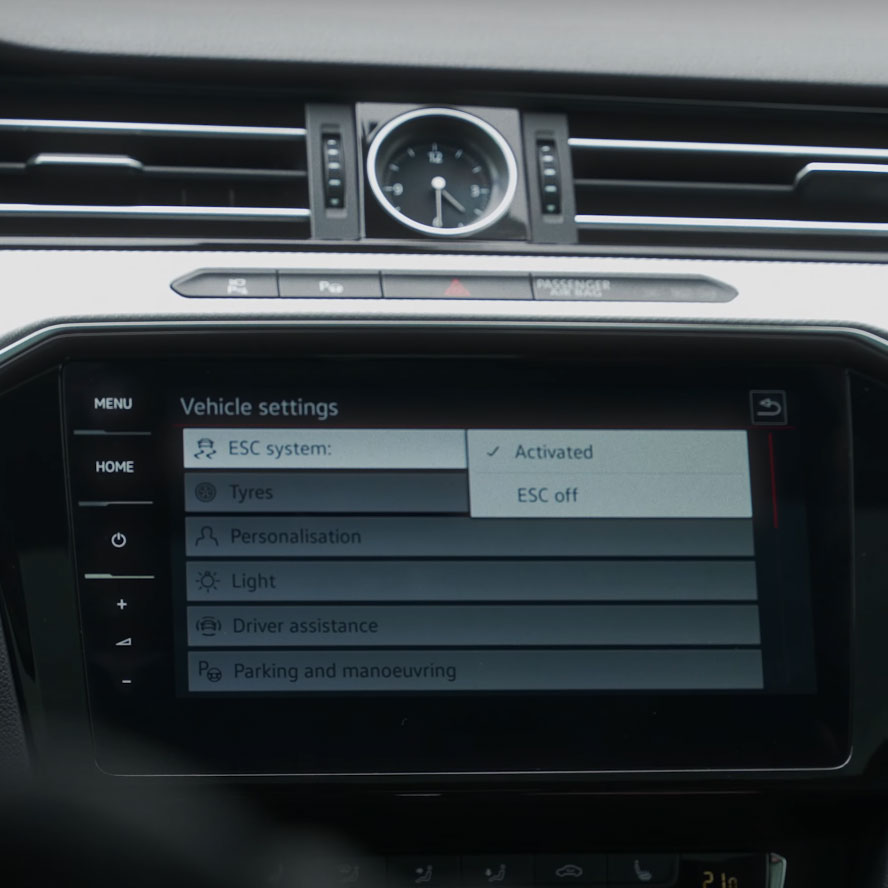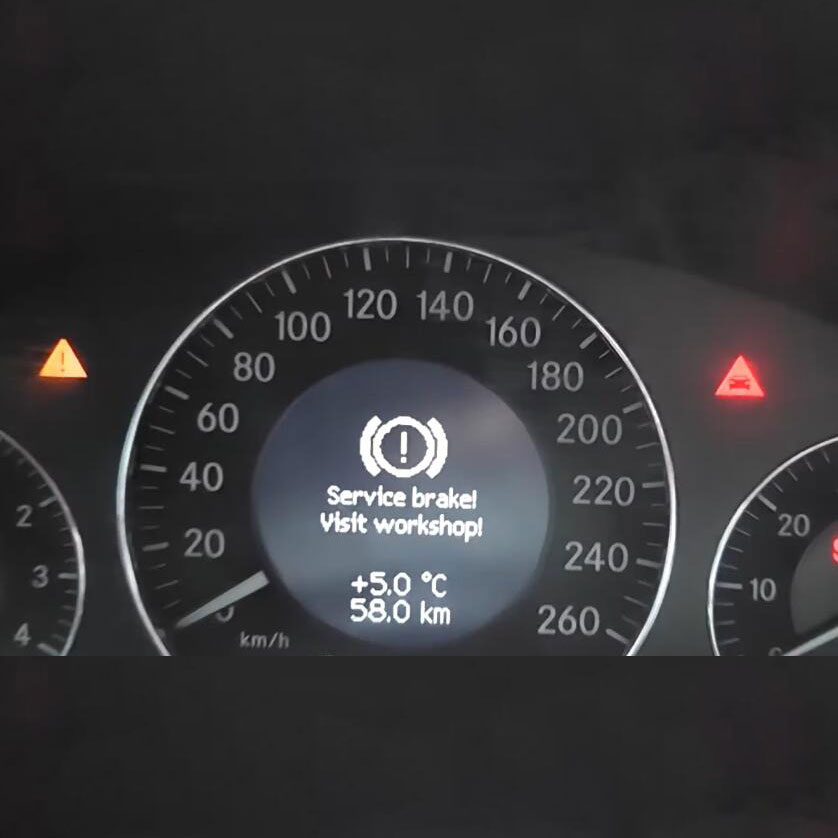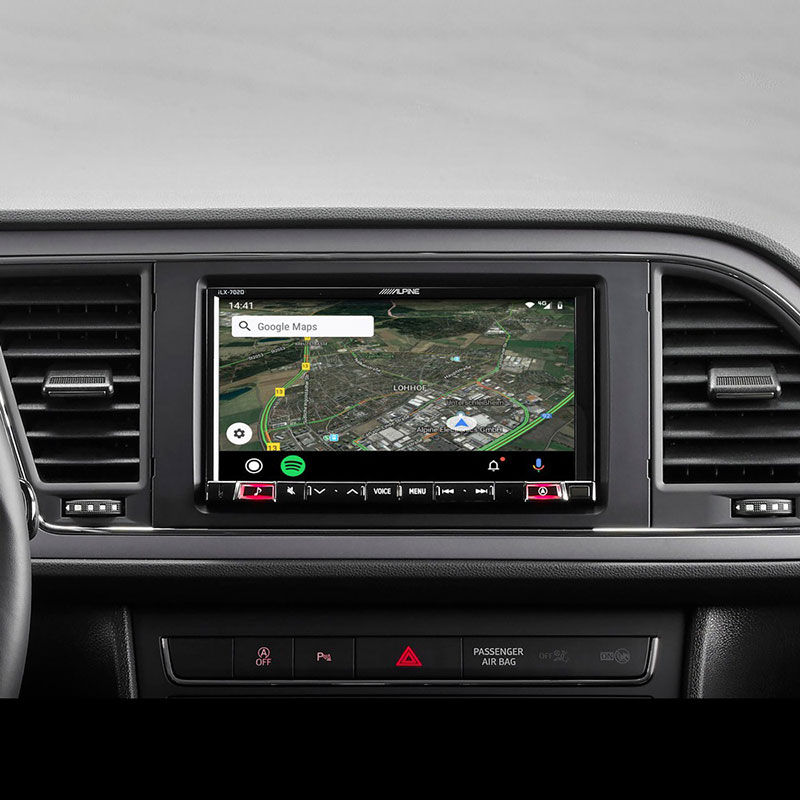
What Does Audi DTC P2279:00/08825:00 Mean?
Contents
- 1. What is Audi DTC P2279:00/08825:00?
- 1.1. Symptoms of Audi DTC P2279:00/08825:00
- 1.2. Common Causes of Audi DTC P2279:00/08825:00
- 2. How to Diagnose Audi DTC P2279:00/08825:00?
- 2.1. Initial Inspection
- 2.2. Smoke Test
- 2.3. Scan Tool Analysis
- 2.4. MAF Sensor Check
- 2.5. PCV Valve Inspection
- 2.6. Turbocharger System Check (If Applicable)
- 2.7. Professional Assistance
- 3. How to Fix Audi DTC P2279:00/08825:00?
- 3.1. Replace Faulty Vacuum Hoses
- 3.2. Repair or Replace Intake Boots
- 3.3. Replace Intake Manifold Gasket
- 3.4. Replace PCV Valve
- 3.5. Clean or Replace MAF Sensor
- 3.6. Repair Turbocharger System (If Applicable)
- 3.7. Clear DTCs and Test
- 4. What Tools are Required to Fix Audi DTC P2279:00/08825:00?
- 4.1. Diagnostic Scan Tool
- 4.2. Smoke Machine
- 4.3. Basic Hand Tools
- 4.4. Pliers
- 4.5. Multimeter
- 4.6. Vacuum Tester
- 4.7. Torque Wrench
- 4.8. Cleaning Supplies
- 4.9. Safety Equipment
- 4.10. Work Light
- 4.11. Optional Tools
- 5. How Severe is Audi DTC P2279:00/08825:00?
- 5.1. Impact on Engine Performance
- 5.2. Fuel Efficiency
- 5.3. Potential Engine Damage
- 5.4. Drivability Issues
- 5.5. Environmental Impact
- 5.6. Long-Term Effects
- 5.7. Recommendation
- 6. Can I Drive My Audi with Error Code P2279:00/08825:00?
- 6.1. Potential Risks of Driving with P2279:00/08825:00
- 6.2. Short-Term Driving Considerations
- 6.3. Recommendation
- 6.4. Alternative Solutions
- 7. What are the Potential Costs to Fix Audi DTC P2279:00/08825:00?
- 7.1. Vacuum Hose Replacement
- 7.2. Intake Boot Replacement
- 7.3. Intake Manifold Gasket Replacement
- 7.4. PCV Valve Replacement
- 7.5. MAF Sensor Cleaning or Replacement
- 7.6. Turbocharger System Repair (If Applicable)
- 7.7. Diagnostic Fees
- 7.8. Additional Costs
- 7.9. AutoExplain.com Remote Support
- 8. How Does AutoExplain.com Help with Audi DTC P2279:00/08825:00?
- 8.1. Remote Diagnostics
- 8.2. Step-by-Step Guidance
- 8.3. Component Identification
- 8.4. Real-Time Support
- 8.5. Cost-Effective Solutions
- 8.6. Comprehensive Support
- 8.7. Contact Information
- 9. What Other DTCs are Related to Audi DTC P2279:00/08825:00?
- 9.1. P0171 – System Too Lean (Bank 1)
- 9.2. P0174 – System Too Lean (Bank 2)
- 9.3. P0507 – Idle Air Control System RPM Higher Than Expected
- 9.4. P0101 – Mass or Volume Air Flow Circuit Range/Performance Problem
- 9.5. P0102 – Mass or Volume Air Flow Circuit Low Input
- 9.6. P0103 – Mass or Volume Air Flow Circuit High Input
- 9.7. P1128 – Long Term Fuel Trim Lean Bank 1
- 9.8. P1129 – Long Term Fuel Trim Lean Bank 2
- 9.9. P2187 – System Too Lean at Idle (Bank 1)
- 9.10. P2189 – System Too Lean at Idle (Bank 2)
- 10. FAQ About Audi DTC P2279:00/08825:00
- 10.1. What does Audi DTC P2279:00/08825:00 mean?
- 10.2. What are the common symptoms of P2279:00/08825:00?
- 10.3. What are the common causes of an intake air system leak?
- 10.4. Can I drive my Audi with the P2279:00/08825:00 code?
- 10.5. How can I diagnose the cause of the P2279:00/08825:00 code?
- 10.6. What tools are needed to fix an intake air system leak?
- 10.7. How much does it cost to fix P2279:00/08825:00?
- 10.8. Can AutoExplain.com help me fix this issue remotely?
- 10.9. What other DTCs might be related to P2279:00/08825:00?
- 10.10. How severe is the P2279:00/08825:00 code?
Audi DTC P2279:00/08825:00 indicates an intake air system leak. Addressing it promptly ensures optimal engine performance and prevents potential damage. AutoExplain.com offers expert remote support to diagnose and resolve this issue efficiently.
1. What is Audi DTC P2279:00/08825:00?
Audi DTC P2279:00/08825:00 signifies an intake air system leak, often leading to reduced engine performance and efficiency. This diagnostic trouble code (DTC) suggests that unmetered air is entering the engine, disrupting the air-fuel mixture. AutoExplain.com can help you diagnose and rectify this issue promptly, ensuring your Audi runs smoothly.
Expanding on the Audi DTC P2279:00/08825:00 Definition
The intake air system is crucial for delivering the correct amount of air to the engine for combustion. When a leak occurs, the engine control unit (ECU) detects an imbalance between the expected and actual airflow. This triggers the P2279:00/08825:00 code. The code specifically points to a “Intake Air System Leak” and is stored in the ECU’s memory. Ignoring this issue can lead to further complications.
1.1. Symptoms of Audi DTC P2279:00/08825:00
- Rough Idling: The engine may idle unevenly or stall.
- Reduced Engine Power: Acceleration may feel sluggish.
- Poor Fuel Economy: The vehicle may consume more fuel than usual.
- Hesitation: The engine may hesitate upon acceleration.
- Check Engine Light: The malfunction indicator lamp (MIL) will illuminate.
- Whistling Noise: A whistling sound may be audible from the engine bay, indicating an air leak.
1.2. Common Causes of Audi DTC P2279:00/08825:00
- Loose or Cracked Hoses: Vacuum hoses and intake boots can crack or become disconnected.
- Faulty Intake Manifold Gasket: A damaged gasket can allow air to leak into the system.
- Defective PCV Valve: A malfunctioning positive crankcase ventilation (PCV) valve can cause vacuum leaks.
- Damaged Mass Air Flow (MAF) Sensor: Although less common, a faulty MAF sensor can contribute to the issue.
- Turbocharger Issues: Leaks in the turbocharger system (if applicable) can also trigger this code.
- Intercooler Leaks: Cracks or loose connections in the intercooler system can cause air leaks.
2. How to Diagnose Audi DTC P2279:00/08825:00?
Diagnosing Audi DTC P2279:00/08825:00 requires a systematic approach to pinpoint the source of the intake air leak. Here’s a step-by-step guide:
2.1. Initial Inspection
Begin with a visual inspection of all intake air system components:
- Vacuum Hoses: Check for cracks, disconnections, and general wear.
- Intake Boots: Inspect the rubber boots connecting the air filter housing to the throttle body and intake manifold.
- Intake Manifold: Look for any signs of damage or cracks.
- Air Filter Housing: Ensure it is properly sealed and free from damage.
2.2. Smoke Test
A smoke test is an effective method for locating air leaks:
- Connect a smoke machine to the intake system.
- Introduce smoke into the system.
- Observe where smoke escapes to identify the leak.
- Pay close attention to hose connections, gaskets, and seals.
2.3. Scan Tool Analysis
Use a diagnostic scan tool to read and record the DTCs:
- Connect the scan tool to the vehicle’s OBD-II port.
- Read and document all stored DTCs.
- Pay attention to any additional codes that may provide further insight.
- Monitor live data such as MAF sensor readings and fuel trim values.
2.4. MAF Sensor Check
The Mass Air Flow (MAF) sensor measures the amount of air entering the engine. A faulty MAF sensor can sometimes contribute to the P2279 code:
- Use a scan tool to monitor MAF sensor readings.
- Compare the readings to the manufacturer’s specifications.
- If the readings are inaccurate, consider cleaning or replacing the MAF sensor.
2.5. PCV Valve Inspection
The PCV valve regulates crankcase pressure and can be a source of leaks:
- Locate the PCV valve and inspect it for damage.
- Check the PCV valve hose for cracks or disconnections.
- Test the PCV valve to ensure it is functioning correctly.
2.6. Turbocharger System Check (If Applicable)
If the Audi is equipped with a turbocharger, inspect the turbocharger system for leaks:
- Check the turbocharger hoses and connections for tightness and damage.
- Inspect the intercooler for cracks or leaks.
- Listen for any unusual noises from the turbocharger during operation.
2.7. Professional Assistance
If you’re unable to locate the leak or are uncomfortable performing these tests, seek professional assistance from AutoExplain.com. Our remote diagnostic services can help pinpoint the issue quickly and accurately.
3. How to Fix Audi DTC P2279:00/08825:00?
Addressing Audi DTC P2279:00/08825:00 involves repairing or replacing the faulty components causing the intake air leak. Here’s a detailed guide on how to fix this issue. AutoExplain.com offers expert guidance and support throughout the repair process.
3.1. Replace Faulty Vacuum Hoses
- Locate Damaged Hoses: Identify cracked, disconnected, or deteriorated vacuum hoses.
- Remove Old Hoses: Disconnect the faulty hoses from their connections.
- Install New Hoses: Replace the old hoses with new, high-quality replacements.
- Secure Connections: Ensure all connections are tight and secure.
3.2. Repair or Replace Intake Boots
- Inspect Intake Boots: Check the rubber boots connecting the air filter housing to the throttle body and intake manifold for cracks or damage.
- Remove Old Boots: Disconnect the damaged boots from their connections.
- Install New Boots: Replace the old boots with new ones, ensuring a proper fit.
- Tighten Clamps: Secure the boots with clamps to prevent air leaks.
3.3. Replace Intake Manifold Gasket
- Remove Intake Manifold: Disconnect all necessary components (e.g., fuel lines, vacuum hoses, electrical connectors) and remove the intake manifold.
- Clean Mating Surfaces: Thoroughly clean the intake manifold and cylinder head mating surfaces.
- Install New Gasket: Place a new intake manifold gasket in the correct position.
- Reinstall Intake Manifold: Reinstall the intake manifold and torque the bolts to the manufacturer’s specifications.
- Reconnect Components: Reconnect all previously disconnected components.
3.4. Replace PCV Valve
- Locate PCV Valve: Find the PCV valve, typically located on the valve cover or intake manifold.
- Disconnect Hoses: Disconnect the hoses connected to the PCV valve.
- Remove Old Valve: Remove the old PCV valve.
- Install New Valve: Install a new PCV valve, ensuring it is properly seated.
- Reconnect Hoses: Reconnect the hoses to the PCV valve and secure them.
3.5. Clean or Replace MAF Sensor
- Locate MAF Sensor: Find the MAF sensor, usually located in the air intake tube near the air filter housing.
- Disconnect Electrical Connector: Disconnect the electrical connector from the MAF sensor.
- Remove MAF Sensor: Remove the MAF sensor from the air intake tube.
- Clean or Replace: If the sensor is dirty, carefully clean it with MAF sensor cleaner. If it is damaged or faulty, replace it with a new one.
- Reinstall MAF Sensor: Reinstall the MAF sensor into the air intake tube.
- Reconnect Electrical Connector: Reconnect the electrical connector to the MAF sensor.
3.6. Repair Turbocharger System (If Applicable)
- Inspect Turbo Hoses: Check for leaks or damage in the turbocharger hoses.
- Replace Damaged Hoses: Replace any damaged hoses with new ones.
- Check Intercooler: Inspect the intercooler for leaks or damage.
- Repair or Replace Intercooler: Repair any leaks or replace the intercooler if necessary.
- Ensure Tight Connections: Ensure all connections in the turbocharger system are tight and secure.
3.7. Clear DTCs and Test
- Clear DTCs: Use a scan tool to clear the P2279:00/08825:00 code and any other stored DTCs.
- Test Drive: Take the vehicle for a test drive to ensure the issue is resolved and the check engine light does not reappear.
- Monitor Performance: Observe the engine’s performance, fuel economy, and idle quality to confirm the repair was successful.
By following these steps, you can effectively address Audi DTC P2279:00/08825:00 and restore your vehicle’s performance. For expert assistance and remote support, contact AutoExplain.com.
4. What Tools are Required to Fix Audi DTC P2279:00/08825:00?
Fixing Audi DTC P2279:00/08825:00 requires a specific set of tools to diagnose and repair the intake air system leak effectively. Here’s a list of essential tools:
4.1. Diagnostic Scan Tool
- Purpose: To read and clear diagnostic trouble codes (DTCs) and monitor live data.
- Features: Should be capable of reading Audi-specific codes and displaying real-time data such as MAF sensor readings and fuel trim values.
4.2. Smoke Machine
- Purpose: To introduce smoke into the intake system and identify the location of air leaks.
- Features: Should have adjustable pressure settings and a nozzle to connect to the intake system.
4.3. Basic Hand Tools
- Socket Set: For removing and installing various components.
- Wrench Set: For tightening and loosening bolts and nuts.
- Screwdrivers ( বিভিন্ন ধরণের): Flathead and Phillips head screwdrivers for removing screws and clamps.
4.4. Pliers
- Purpose: For removing and installing hoses and clamps.
- Types: Include hose clamp pliers, needle-nose pliers, and regular pliers.
4.5. Multimeter
- Purpose: To test electrical components such as the MAF sensor.
- Features: Should be capable of measuring voltage, resistance, and current.
4.6. Vacuum Tester
- Purpose: To test the vacuum pressure of various components, such as the PCV valve.
4.7. Torque Wrench
- Purpose: To tighten bolts to the manufacturer’s specified torque.
- Features: Should have accurate torque settings and a clear display.
4.8. Cleaning Supplies
- MAF Sensor Cleaner: Specifically designed for cleaning MAF sensors without causing damage.
- Shop Rags: For cleaning surfaces and wiping up spills.
4.9. Safety Equipment
- Gloves: To protect hands from dirt and chemicals.
- Eye Protection: To protect eyes from debris and fluids.
4.10. Work Light
- Purpose: To provide adequate lighting for working in the engine bay.
- Features: Should be portable and bright.
4.11. Optional Tools
- Mechanic’s Stethoscope: To listen for air leaks in hard-to-reach areas.
- Inspection Mirror: To visually inspect areas that are difficult to see.
Having these tools on hand will enable you to diagnose and repair Audi DTC P2279:00/08825:00 effectively. AutoExplain.com is available to provide remote support and guidance, ensuring you have the expertise needed to complete the job successfully.
5. How Severe is Audi DTC P2279:00/08825:00?
Audi DTC P2279:00/08825:00, indicating an intake air system leak, is moderately severe and should be addressed promptly to prevent further complications. Ignoring this issue can lead to several adverse effects on your vehicle’s performance and longevity.
5.1. Impact on Engine Performance
- Reduced Power: An intake air leak disrupts the air-fuel mixture, leading to decreased engine power and acceleration.
- Rough Idling: The engine may idle unevenly or stall due to the improper air-fuel ratio.
- Hesitation: The vehicle may hesitate during acceleration, making driving less smooth.
5.2. Fuel Efficiency
- Poor Fuel Economy: The engine compensates for the unmetered air by using more fuel, resulting in reduced fuel efficiency.
5.3. Potential Engine Damage
- Increased Wear: An improper air-fuel mixture can lead to increased engine wear and tear over time.
- Catalytic Converter Damage: Prolonged operation with an air leak can damage the catalytic converter, leading to costly repairs.
5.4. Drivability Issues
- Stalling: The engine may stall unexpectedly, especially at low speeds or when idling.
- Difficult Starting: Starting the engine may become more difficult due to the air-fuel mixture imbalance.
5.5. Environmental Impact
- Increased Emissions: An air leak can cause the engine to produce higher levels of harmful emissions, contributing to environmental pollution.
5.6. Long-Term Effects
- Component Degradation: Continued operation with an intake air leak can accelerate the degradation of other engine components, leading to more extensive repairs in the future.
- Check Engine Light: The persistent check engine light can mask other potential issues, making it harder to diagnose new problems.
5.7. Recommendation
Given these potential consequences, it’s crucial to address Audi DTC P2279:00/08825:00 as soon as possible. A thorough diagnosis and repair can prevent further damage and restore your vehicle’s performance. AutoExplain.com offers expert remote support to help you diagnose and resolve this issue efficiently.
6. Can I Drive My Audi with Error Code P2279:00/08825:00?
While it is technically possible to drive your Audi with error code P2279:00/08825:00, it is not recommended. Driving with this code can lead to several issues that may worsen over time, causing more significant damage and increasing repair costs.
6.1. Potential Risks of Driving with P2279:00/08825:00
- Reduced Engine Performance: The intake air leak can cause a decrease in engine power, making acceleration sluggish and overall driving less enjoyable.
- Poor Fuel Economy: The engine may consume more fuel than usual as it tries to compensate for the unmetered air, leading to increased fuel costs.
- Rough Idling and Stalling: The engine may idle roughly or stall, especially at low speeds or when stopped, which can be inconvenient and potentially dangerous.
- Catalytic Converter Damage: Continuous driving with an improper air-fuel mixture can damage the catalytic converter, resulting in expensive repairs.
- Increased Emissions: The vehicle may produce higher levels of harmful emissions, which can contribute to environmental pollution and may cause the vehicle to fail emissions tests.
6.2. Short-Term Driving Considerations
If you must drive with the P2279:00/08825:00 code, consider the following:
- Drive Conservatively: Avoid aggressive acceleration and high speeds to minimize stress on the engine.
- Monitor Engine Performance: Pay attention to any unusual noises, vibrations, or changes in performance.
- Keep Trips Short: Limit your driving to essential trips to reduce the risk of further damage.
6.3. Recommendation
It is best to address the P2279:00/08825:00 code as soon as possible. Schedule a diagnostic appointment with a trusted mechanic or use AutoExplain.com’s remote support to identify and fix the issue. Delaying repairs can lead to more severe and costly problems down the road.
6.4. Alternative Solutions
- Remote Diagnostics: Contact AutoExplain.com for remote diagnostic services to pinpoint the exact cause of the leak.
- Professional Inspection: Take your vehicle to a certified mechanic for a thorough inspection and repair.
- Rental Vehicle: If the repairs will take some time, consider renting a vehicle to avoid driving your Audi with the error code.
By taking these precautions, you can minimize the risks associated with driving with the P2279:00/08825:00 code and ensure your vehicle is repaired properly.
7. What are the Potential Costs to Fix Audi DTC P2279:00/08825:00?
The cost to fix Audi DTC P2279:00/08825:00 can vary widely depending on the cause of the intake air leak and the extent of the damage. Here’s a breakdown of potential costs for different repairs:
7.1. Vacuum Hose Replacement
- Description: Replacing cracked or damaged vacuum hoses.
- Parts Cost: $10 – $50 (per hose)
- Labor Cost: $50 – $150
- Total Cost: $60 – $200
7.2. Intake Boot Replacement
- Description: Replacing cracked or damaged intake boots connecting the air filter housing to the throttle body and intake manifold.
- Parts Cost: $30 – $100 (per boot)
- Labor Cost: $50 – $150
- Total Cost: $80 – $250
7.3. Intake Manifold Gasket Replacement
- Description: Replacing a damaged intake manifold gasket.
- Parts Cost: $20 – $80
- Labor Cost: $200 – $500
- Total Cost: $220 – $580
7.4. PCV Valve Replacement
- Description: Replacing a faulty PCV valve.
- Parts Cost: $30 – $100
- Labor Cost: $50 – $150
- Total Cost: $80 – $250
7.5. MAF Sensor Cleaning or Replacement
- Description: Cleaning or replacing a faulty MAF sensor.
- Parts Cost: $10 (for MAF cleaner) / $100 – $300 (for a new sensor)
- Labor Cost: $30 – $100
- Total Cost: $30 – $110 (cleaning) / $130 – $400 (replacement)
7.6. Turbocharger System Repair (If Applicable)
- Description: Repairing leaks or damage in the turbocharger system, including hoses and intercooler.
- Parts Cost: $50 – $500+ (depending on the component)
- Labor Cost: $100 – $500+ (depending on the complexity)
- Total Cost: $150 – $1000+
7.7. Diagnostic Fees
- Description: Cost for a professional mechanic to diagnose the issue.
- Cost: $75 – $150
7.8. Additional Costs
- Related Repairs: Depending on the severity of the leak, additional components may need to be replaced, such as the throttle body or other intake components.
- Taxes and Fees: Sales tax and shop fees can add to the overall cost.
7.9. AutoExplain.com Remote Support
- Description: Expert remote support to diagnose and guide you through the repair process.
- Cost: Contact AutoExplain.com for pricing details.
By understanding these potential costs, you can better prepare for the expenses associated with fixing Audi DTC P2279:00/08825:00. AutoExplain.com is here to provide cost-effective solutions and expert guidance to help you resolve this issue efficiently.
8. How Does AutoExplain.com Help with Audi DTC P2279:00/08825:00?
AutoExplain.com offers expert remote support and diagnostic services to help you resolve Audi DTC P2279:00/08825:00 efficiently and effectively. Our team of experienced technicians provides comprehensive assistance to guide you through the diagnosis and repair process.
8.1. Remote Diagnostics
- Expert Analysis: Our technicians can remotely access your vehicle’s diagnostic data to identify the root cause of the intake air leak.
- Accurate Identification: We use advanced diagnostic tools and techniques to pinpoint the exact location of the leak, saving you time and money.
8.2. Step-by-Step Guidance
- Detailed Instructions: We provide step-by-step instructions and visual aids to help you perform the necessary repairs.
- Expert Advice: Our technicians offer expert advice and recommendations on the best course of action for your specific situation.
8.3. Component Identification
- Part Numbers: We provide accurate part numbers for the components you need to replace, ensuring you get the correct parts the first time.
- Vendor Recommendations: We can recommend reputable vendors for purchasing high-quality replacement parts.
8.4. Real-Time Support
- Live Assistance: Our technicians are available to provide real-time support via WhatsApp, email, or other online platforms.
- Troubleshooting: We can help you troubleshoot any issues that arise during the repair process.
8.5. Cost-Effective Solutions
- DIY Guidance: We empower you to perform the repairs yourself, saving you money on labor costs.
- Preventative Advice: We offer advice on preventative maintenance to help you avoid future issues.
8.6. Comprehensive Support
- ECU Programming: We offer ECU programming services to ensure your vehicle’s computer is properly calibrated after the repair.
- Navigation Updates: We can assist with navigation updates to keep your vehicle’s GPS system current.
- Key Programming: We provide key programming services to replace or duplicate your vehicle’s keys.
8.7. Contact Information
- Office Address: 1500 N Grant ST Sten Denver, CO 80203
- WhatsApp: +1(936)2896695
- Email: [email protected]
- Website: AutoExplain.com
With AutoExplain.com, you can have confidence in your ability to diagnose and repair Audi DTC P2279:00/08825:00. Contact us today for expert remote support and get your Audi running smoothly again.
9. What Other DTCs are Related to Audi DTC P2279:00/08825:00?
Several other Diagnostic Trouble Codes (DTCs) can be related to Audi DTC P2279:00/08825:00, indicating an intake air system leak. These related codes can provide additional insight into the nature and extent of the problem. Here are some common DTCs that may accompany P2279:00/08825:00:
9.1. P0171 – System Too Lean (Bank 1)
- Description: Indicates that the air-fuel mixture is too lean on Bank 1 of the engine.
- Relevance: An intake air leak can cause a lean condition, triggering this code along with P2279:00/08825:00.
9.2. P0174 – System Too Lean (Bank 2)
- Description: Indicates that the air-fuel mixture is too lean on Bank 2 of the engine.
- Relevance: Similar to P0171, this code suggests a lean condition due to unmetered air entering the engine.
9.3. P0507 – Idle Air Control System RPM Higher Than Expected
- Description: Indicates that the engine’s idle speed is higher than the manufacturer’s specification.
- Relevance: An intake air leak can cause the engine to idle faster as the system tries to compensate for the extra air.
9.4. P0101 – Mass or Volume Air Flow Circuit Range/Performance Problem
- Description: Indicates an issue with the Mass Air Flow (MAF) sensor circuit.
- Relevance: A faulty MAF sensor can contribute to or be affected by an intake air leak, triggering this code.
9.5. P0102 – Mass or Volume Air Flow Circuit Low Input
- Description: Indicates that the MAF sensor is sending a low input signal to the ECU.
- Relevance: This code may appear if the MAF sensor is not reading the correct airflow due to a leak.
9.6. P0103 – Mass or Volume Air Flow Circuit High Input
- Description: Indicates that the MAF sensor is sending a high input signal to the ECU.
- Relevance: This code may appear if the MAF sensor is misinterpreting the airflow due to a leak.
9.7. P1128 – Long Term Fuel Trim Lean Bank 1
- Description: Indicates that the long-term fuel trim is lean on Bank 1.
- Relevance: This code is often associated with lean conditions caused by intake air leaks.
9.8. P1129 – Long Term Fuel Trim Lean Bank 2
- Description: Indicates that the long-term fuel trim is lean on Bank 2.
- Relevance: Similar to P1128, this code suggests a lean condition on Bank 2 due to an air leak.
9.9. P2187 – System Too Lean at Idle (Bank 1)
- Description: Indicates that the system is too lean at idle on Bank 1.
- Relevance: This code specifically points to a lean condition during idle, which can be caused by an intake air leak.
9.10. P2189 – System Too Lean at Idle (Bank 2)
- Description: Indicates that the system is too lean at idle on Bank 2.
- Relevance: Similar to P2187, this code indicates a lean condition during idle on Bank 2 due to an air leak.
When diagnosing Audi DTC P2279:00/08825:00, it’s important to check for these related codes. Addressing all associated issues can help ensure a complete and effective repair. AutoExplain.com can assist you in diagnosing these codes and providing the necessary support for a successful resolution.
10. FAQ About Audi DTC P2279:00/08825:00
Here are some frequently asked questions (FAQs) about Audi DTC P2279:00/08825:00, which indicates an intake air system leak. These questions and answers can help you better understand the issue and how to address it.
10.1. What does Audi DTC P2279:00/08825:00 mean?
Audi DTC P2279:00/08825:00 indicates an intake air system leak, meaning unmetered air is entering the engine, disrupting the air-fuel mixture. This can lead to reduced engine performance and efficiency.
10.2. What are the common symptoms of P2279:00/08825:00?
Common symptoms include rough idling, reduced engine power, poor fuel economy, hesitation during acceleration, a whistling noise from the engine bay, and the check engine light being illuminated.
10.3. What are the common causes of an intake air system leak?
Common causes include loose or cracked vacuum hoses, faulty intake manifold gaskets, defective PCV valves, damaged MAF sensors, and leaks in the turbocharger system (if applicable).
10.4. Can I drive my Audi with the P2279:00/08825:00 code?
While it is possible to drive with the code, it is not recommended, as it can lead to reduced engine performance, poor fuel economy, and potential damage to the catalytic converter.
10.5. How can I diagnose the cause of the P2279:00/08825:00 code?
To diagnose the issue, start with a visual inspection of all intake components, perform a smoke test to locate leaks, use a scan tool to read DTCs and monitor live data, and check the MAF sensor and PCV valve.
10.6. What tools are needed to fix an intake air system leak?
Essential tools include a diagnostic scan tool, smoke machine, socket set, wrench set, screwdrivers, pliers, multimeter, vacuum tester, torque wrench, and safety equipment.
10.7. How much does it cost to fix P2279:00/08825:00?
The cost can vary depending on the cause of the leak. Replacing a vacuum hose may cost $60-$200, while replacing an intake manifold gasket can range from $220-$580. Diagnostic fees typically cost $75-$150.
10.8. Can AutoExplain.com help me fix this issue remotely?
Yes, AutoExplain.com offers expert remote support to diagnose and guide you through the repair process. Our technicians can provide step-by-step instructions, component identification, and real-time support.
10.9. What other DTCs might be related to P2279:00/08825:00?
Related DTCs include P0171 (System Too Lean, Bank 1), P0174 (System Too Lean, Bank 2), P0507 (Idle Air Control System RPM Higher Than Expected), and P0101 (MAF Sensor Range/Performance Problem).
10.10. How severe is the P2279:00/08825:00 code?
The P2279:00/08825:00 code is moderately severe and should be addressed promptly to prevent further complications, such as reduced engine performance, poor fuel economy, and potential engine damage.
These FAQs should provide a clearer understanding of Audi DTC P2279:00/08825:00 and how to address it effectively. For expert assistance and remote support, contact AutoExplain.com.
Don’t let Audi DTC P2279:00/08825:00 slow you down. Contact AutoExplain.com today via WhatsApp at +1(936)2896695 or email us at [email protected] for expert remote support. Visit our website at AutoExplain.com and let our experienced technicians guide you through the diagnosis and repair process. Get your Audi running smoothly again with AutoExplain.com!


How to Deactivate ESC in Volkswagen, Audi, Skoda, or SEAT

Mercedes Benz ‘Service Brake Visit Workshop’ Warning? Here’s What Dealers Don’t Tell You!

How to Perform Seat Navigation Update? – A Comprehensive Guide for Technicians






